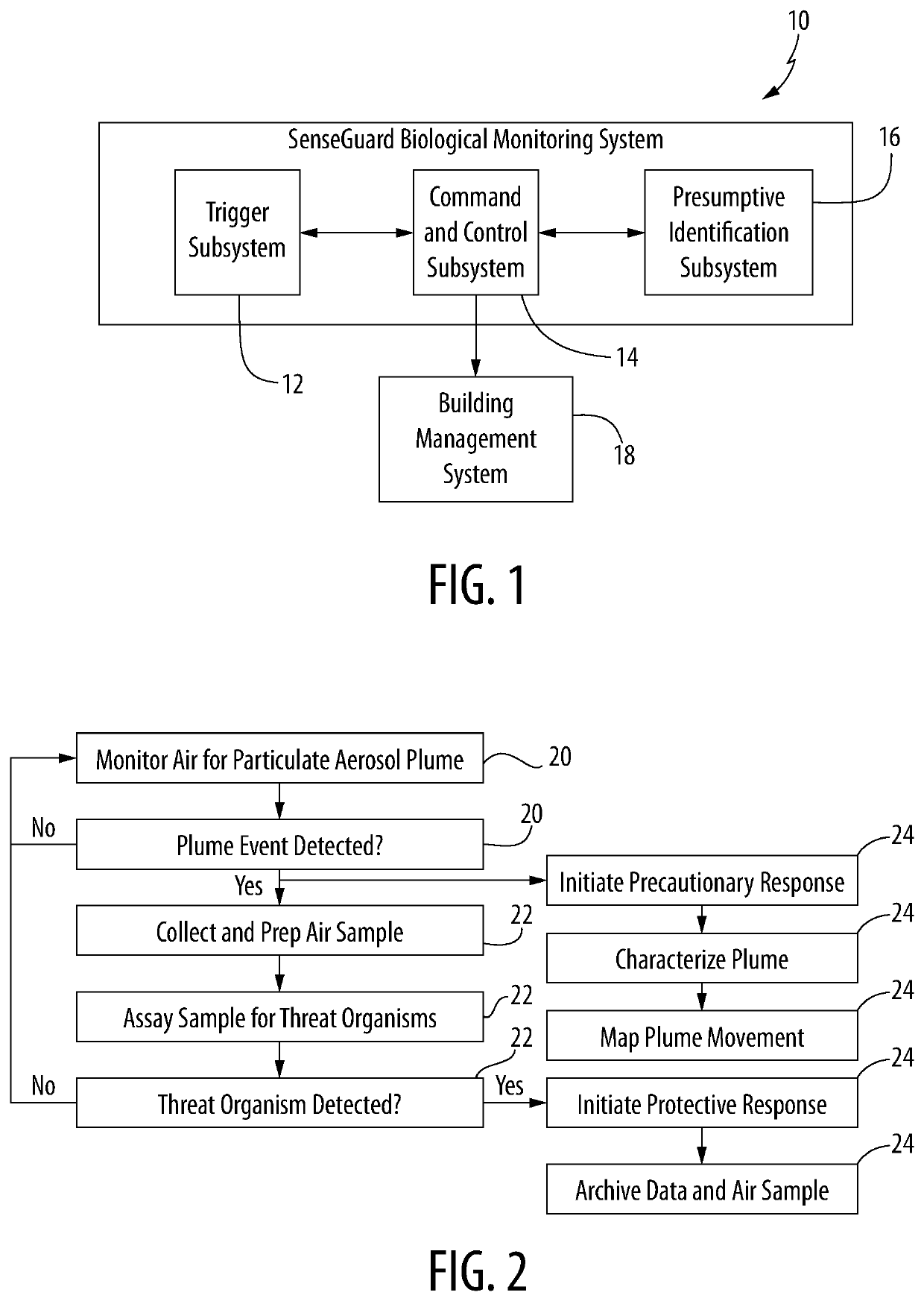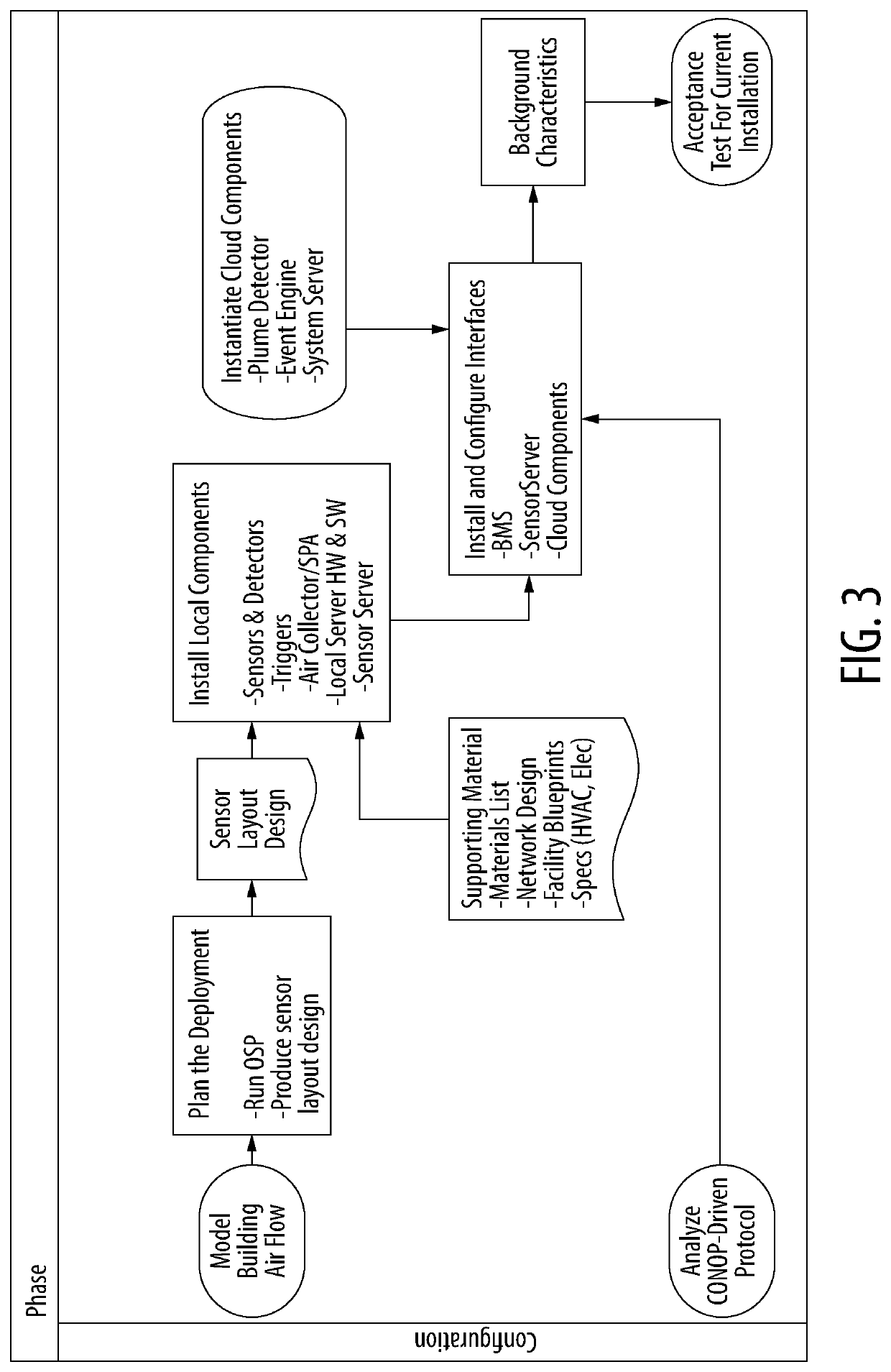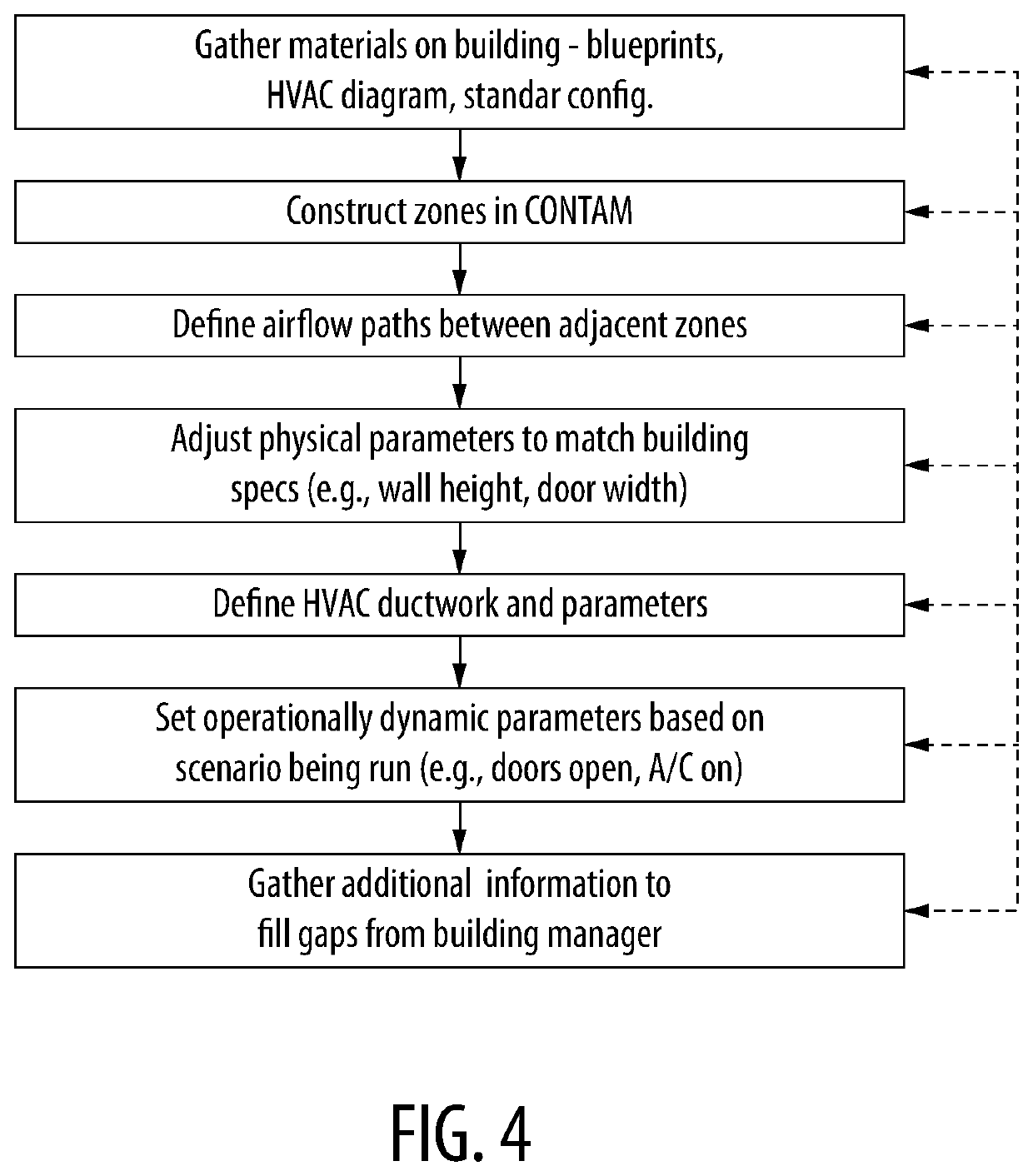Indoor biological detection system and method
- Summary
- Abstract
- Description
- Claims
- Application Information
AI Technical Summary
Benefits of technology
Problems solved by technology
Method used
Image
Examples
Embodiment Construction
[0028]The indoor biological detection system and method fora monitored space such as a building or portion of a building of the present invention is a system having a flexible, scalable, and modular system architecture that easily adapts as the component state of the art evolves. The indoor biological detection system and method addresses new and emerging biological threats fora variety of indoor venues, such as office buildings and conference centers. It includes an interface with sensors for traditional and non-traditional chemical agents, toxic industrial chemicals, explosives, and radiological threats. The system functions autonomously with application across a broad spectrum of threats for complete situational awareness.
[0029]The indoor biological detection system and method of the present invention provides the following benefits:[0030]autonomous bio-threat detection with short detection time, high probability of detection, and low false alarm rate, providing actionable inform...
PUM
| Property | Measurement | Unit |
|---|---|---|
| Dispersion potential | aaaaa | aaaaa |
| Density | aaaaa | aaaaa |
| Transport properties | aaaaa | aaaaa |
Abstract
Description
Claims
Application Information
 Login to View More
Login to View More - R&D Engineer
- R&D Manager
- IP Professional
- Industry Leading Data Capabilities
- Powerful AI technology
- Patent DNA Extraction
Browse by: Latest US Patents, China's latest patents, Technical Efficacy Thesaurus, Application Domain, Technology Topic, Popular Technical Reports.
© 2024 PatSnap. All rights reserved.Legal|Privacy policy|Modern Slavery Act Transparency Statement|Sitemap|About US| Contact US: help@patsnap.com










